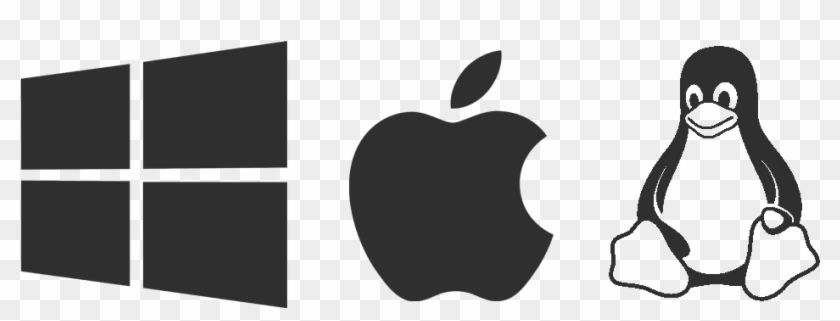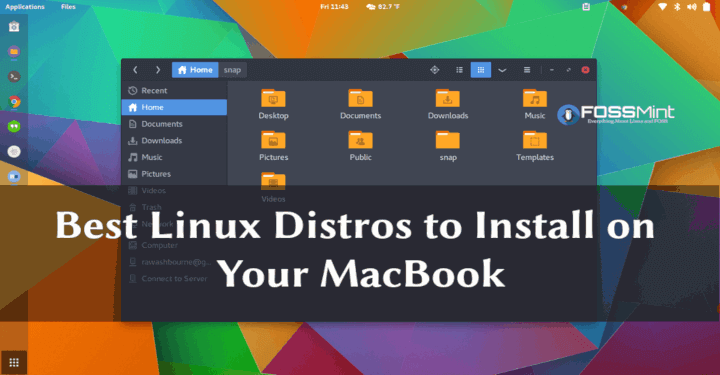Make a Linux Bootable USB to Boot and Run Linux from a USB Flash Drive. Recommended YUMI – Multiboot USB Creator Updated: September 29, 2021 Legacy Classic Universal USB Installer – UUI Updated: August 29, 2021 Easily install your favorite Linux operating system to a bootable USB flash drive. Download the latest version of Google Earth for PC, Mac, or Linux By installing, you. Mac - Mac OS X 10.6.0 or later Linux - LSB 4.1 (Linux Standard Base) libraries See the Release Notes for this version: Release notes. Other downloads: Download Google Earth Pro.
Linux is an open-source operating system that you can install on your computer for free. It offers several advantages over Windows and Mac, such as flexibility, privacy, better security, and easy customization. If you have a Mac, and you would like to explore a new, open-source OS, check out our guide on how to install Linux on a Mac.
If you want to dualboot Linux and macOS, you will need to create a space for your Linux OS tolive. In order to do this, you will have to partition your main hard drive.Here’s how to do that:
How to Partition your Mac Hard Drive

- Open your Applications folder and click Utilities.
- Then open Disk Utility.
- Next, click View in the top left corner of the window.
- Then select Show All Devices.
- Select your macOS partition and then click Partition. You can find this button at the top of the window. If you are using a newer Mac, you might be asked to add a volume. You can click Partition on the pop-up.
- Set the partition size you need for your Linux OS. You can do this by dragging the little white circles on the edge of the larger circle, or you can enter the size in the box next to Size. The gray side of the pie will be your Mac space, while the blue space will be your new partition. It is recommended that you set aside at least 20GB for Linux. You can also add other information here as well, such as the partition name. Take note of the size of your partition, you will need this information later.
- Format the new partition as MS-DOS (FAT).
- Click Apply. This will cause your computer to become unresponsive as the partition is created.
- Click Partition and Continue when further prompted and wait for the partition process to finish.
How to Make a Bootable USB on a Mac
- Download a Linux distro. An ISO file is a disk image. Some of the top options are Ubuntu, Mint, or Deepin. They are free to download from each distribution’s main website. In this article, we are using Ubuntu.
- Open Disk Utility, select your USB drive, and click Erase.
- Then format your USB drive as MS-DOS (FAT) and the scheme as GUID Partition Map. You can do this in Disk Utility by selecting your drive and clicking Erase.
- Download the Etcher app. This will allow you to burn your Linux distro onto a USB flash drive. You can download Etcher for free here.
- Move the Etcher app to your Applications folder. If you get a warning saying that you are not able to open the application, you will have to go to System Preferences > Security and Privacy > General. Then click the lock, enter your password, and click Open Anyway.
- Open Etcher, click Select Image, and select your Linux ISO. This is the file you downloaded in step one.
- Click Select target and choose your USB drive.
- Then click Flash. If you get an error message, and you’re running a newer OS, go to Applications > Utilities and open the Terminal app. Then enter the following command and hit enter:
If you still get an error message that says thedisk you inserted was not readable, click ignore.
How to Install Linux on a Mac
Once you’ve made a partition, you can thencontinue with the rest of the Linux installation setup below. But beforeyou begin, you will need a USB mouse and keyboard. This is because Linux willnot detect your drivers if you have a newer Mac.
- Switch off your Mac computer.
- Plug the bootable Linux USB drive into your Mac.
- Turn on your Mac while holding down the Option key. You will then see the boot manager with a list of available devices you can boot from.
- Select your USB stick and hit enter. This will be named EFI boot or EFI drive.
- Then select Install from the GRUB menu. You can also select Try Without Installing.
- Follow the on-screen installation instructions. Select Normal Installation.
- On the Installation Type window, choose Something else. This is an option that will let you choose the partition you made earlier for installing your new Linux OS. If you choose the other options, you risk installing Linux over your current operating system, which would also erase all your files and folders.
- Choose the partition you made. This is the partition that is the same size as the one that you made earlier.
- Then click Change. You will see this under the list of devices.
- In the Use as drop-down, select ext4 journaling file system.
- In the Mount Point drop-down, select forward slash and click OK.
- Click Continue when prompted.
- Then click Install Now.
- Next, click Continue on succeeding warning pop-ups.
- Enter your time zone, choose your keyboard layout, and click Continue.
- Set up your Linux account. Type in your name, computer name, username, and password.
- Click Continue.
- Wait for the installation process to start and finish.
- Restart your Mac and hold down the Option key while it does.
- Choose your Linux OS to start using it.
After installing the OS and exploring it, makesure that your applications are working properly.
Now that you know how to install Linux on your Mac, check out our guide on how to install Linux on a Windows 10 computer.
HelloTech editors choose the products and services we write about. When you buy through our links, we may earn a commission.
Was this article helpful?
Related Articles
LaTeX is free software under the terms of the LaTeX Project Public License (LPPL). LaTeX is distributed through CTAN servers or comes as part of many easily installable and usable TeX distributions provided by the TeX User Group (TUG) or third parties. If you run into trouble, visit the help section.
LaTeX is not a stand-alone typesetting program in itself, but document preparation software that runs on top of Donald E. Knuth's TeX typesetting system. TeX distributions usually bundle together all the parts needed for a working TeX system and they generally add to this both configuration and maintenance utilities. Nowadays LaTeX, and many of the packages built on it, form an important component of any major TeX distribution.
- The LaTeX Git Repository
The LaTeX team cannot guarantee that TeX distributions, even recent ones, contain the most recent version of LaTeX. It may happen that you need a more recent LaTeX than the one that your favourite TeX distribution carries, e.g., in order to get a particular bug fix. In that case you will need to fetch LaTeX from CTAN and install it on top of your distribution. See below for details.

TeX Distributions
If you’re new to TeX and LaTeX or just want an easy installation, geta full TeX distribution. The TeX Users Group (TUG) has a list of notable distributionsthat are entirely, or least primarily, free software.
Linux
Check your Linux distributions software source for a TeX distribution including LaTeX. You can also install the current TeX Live distribution directly---in fact this may be advisable as many Linux distributions only contain older versions of TeX Live, see Linux TeX Live package status for details.

Mac OS
The MacTeX distribution contains everything you need, including a complete TeX system with LaTeX itself and editors to write documents.
Windows
Check out the MiKTeX or proTeXt or TeX Live distributions; they contain a complete TeX system with LaTeX itself and editors to write documents.
Online
LaTeX online services like Papeeria, Overleaf, ShareLaTeX, Datazar, and LaTeX base offer the ability to edit, view and download LaTeX files and resulting PDFs.
CTAN
You can obtain LaTeX from CTAN, which is theprimary source of distribution for LaTeX. In order for your downloadedLaTeX to be of any use, you have to obtain and set up a TeX systemfirst. You can either install a TeX distribution (see above) or get aTeX system from CTAN. Ifyou use a TeX distribution then it will include a version of LaTeX sothis will probably make things easier for you; but you may have areason not to do this.
Download Linux For Mac M1
The LaTeX Git Repository
These days the LaTeX development sources are kept in a GitHubrepository (previously we used SVN).
Anyone can access it and download the files, butsubmission is restricted to team members. The repository is located at https://github.com/latex3/latex2eand from that browser page you may explore the files, clone therepository or download the files in a .zip archive (roughly 25Mb) byusing the appropriate buttons.
If you are familiar with Git you can also clone the repository using thecommand line or your favorite Git fontend tool, e.g.,

which needs about 50Mb of space.Alternatively, you can do a Subversion checkout from the command line, e.g.,
which will just checkout the current files.But be aware that a SVN checkout of the form
will download all files including theirhistory (back to 2009) and amounts to roughly 1.4Gb so that is quite large.
Note: If you had bookmarked the old SVN repository please update thatbookmark to the new GIT repository as we have finally removed it.
A note on Git pull requests
Git repositories support distributed development and allow people toprovide change sets that are made available through so called pullrequests, so that the maintainers of a program can “pull the suggestedchanges” into the main repository.
While we appreciate contributions, we think that for the core LaTeXsoftware pull requests are usually not a good approach (unless thechange has be already discussed and agreed upon).The stability of LaTeX is very important and this means that changes tothe kernel are necessarily very conservative. It also means that a lotof discussion has to happen before any changes are made. So if you dodecide to post a pull request, please bear this in mind: we doappreciate ideas, but cannot always integrate them into the kernel andit is quite likely that we reject updates made in this way.
If you want to discuss a possible contribution before (or instead of)making a pull request, we suggest you raise the topic first onthe LATEX-L list or drop aline to the team.
Historic LaTeX
Ulrik Vieth has collected historic versions of LaTeX from LaTeX 2.0for TeX 1.0 (released on 11 December 1983) onwards. You can find thematftp://ftp.tug.org/historic/macros/latex-saildart/.There might even be some earlier versions. All files have been pulledfrom the SAILDART archive site at http://z.baumgart.org/ (no longeronline) which was based on archive tapes from SAIL at Stanford.
Download Linux For Macbook Air
More historic material can be found at ftp://ftp.tug.org/historic (you may not be able to open this in all browsers — alternatively try https://www.math.utah.edu/pub/tex/historic/).